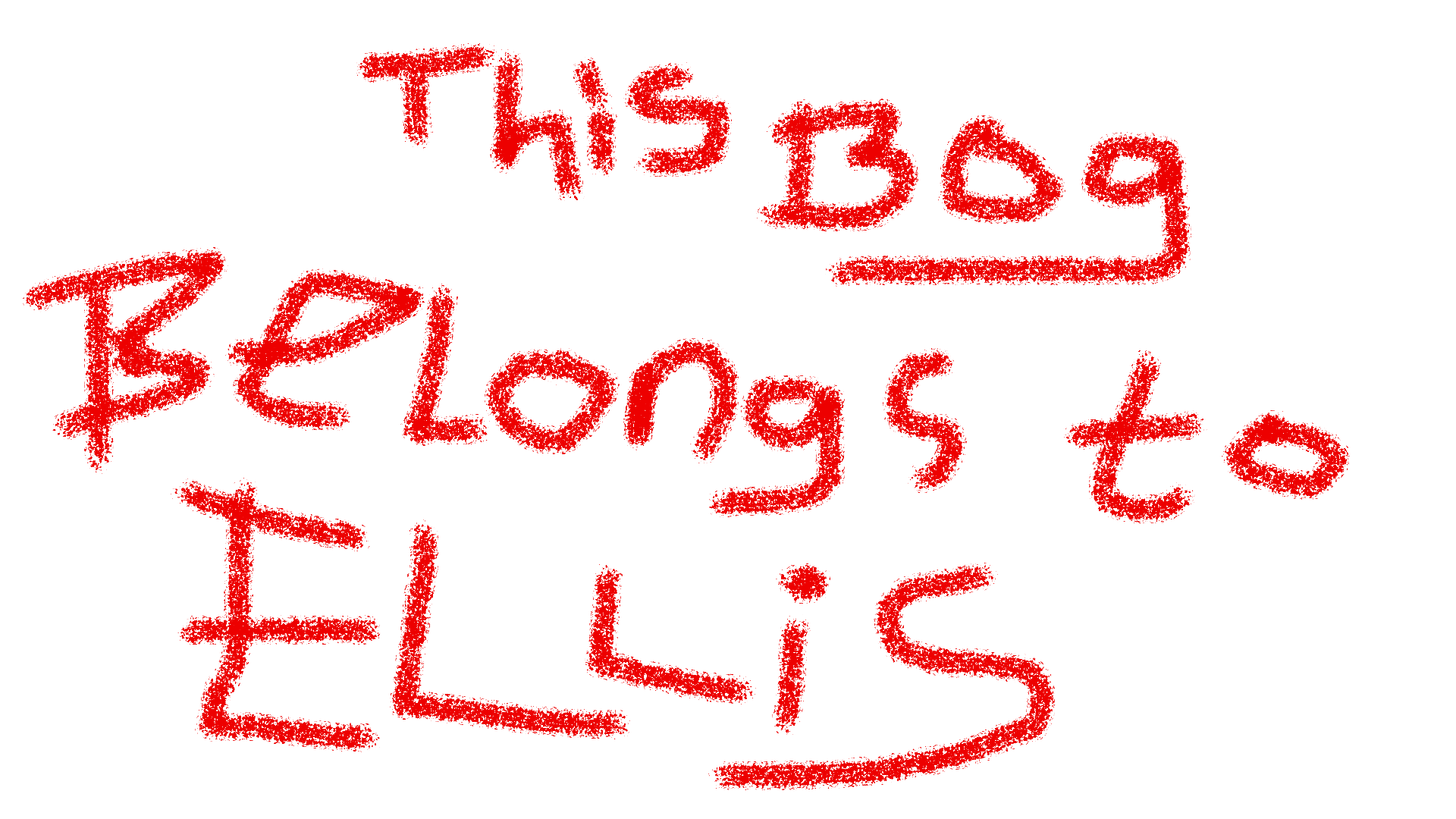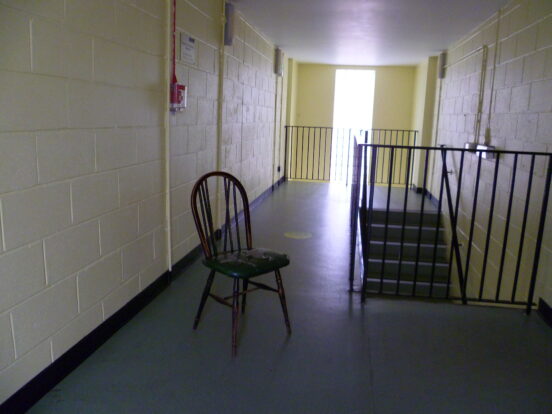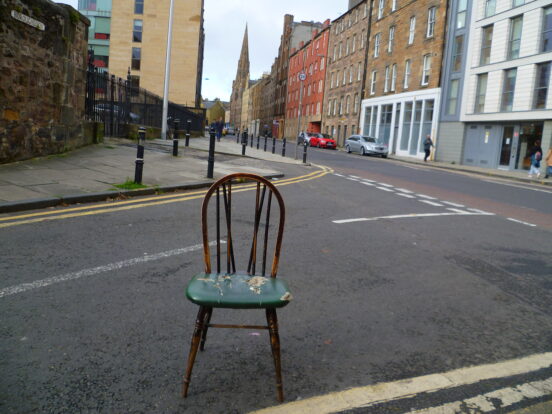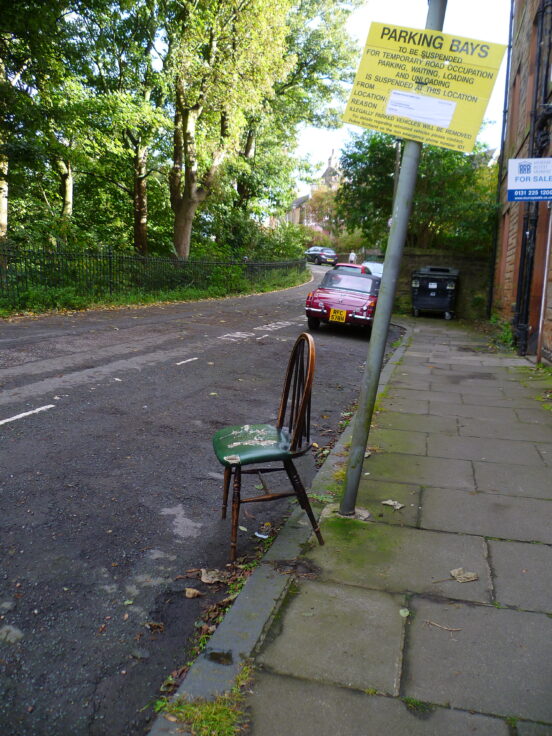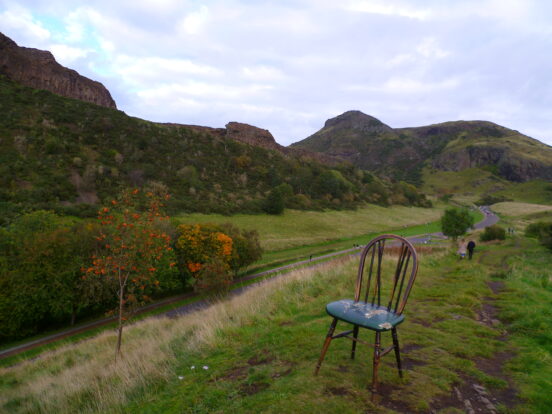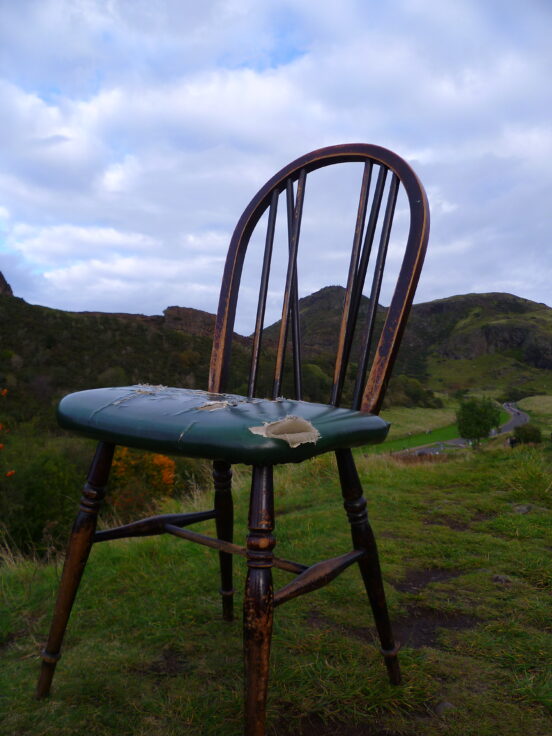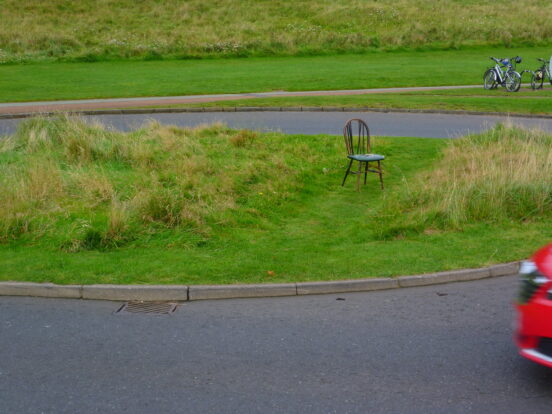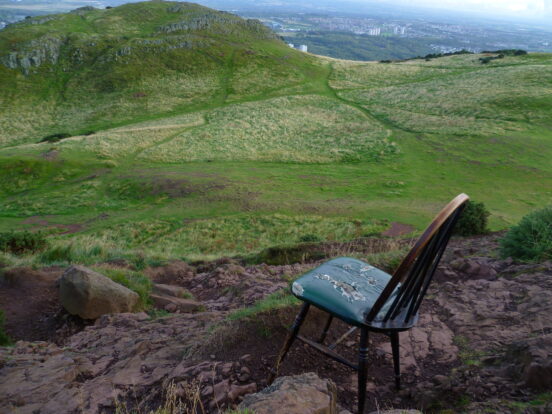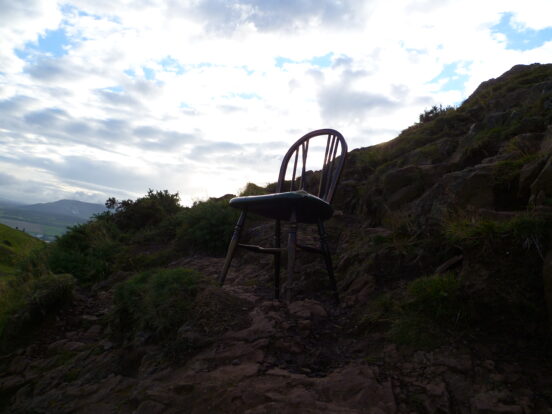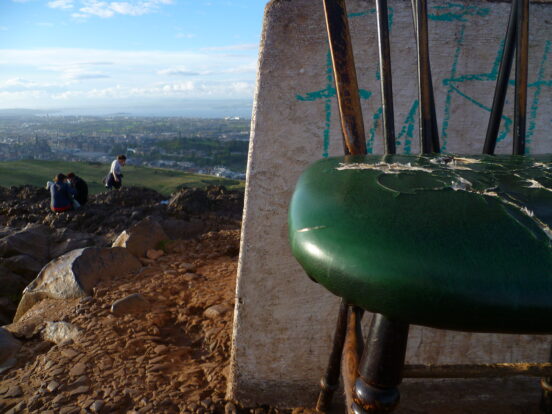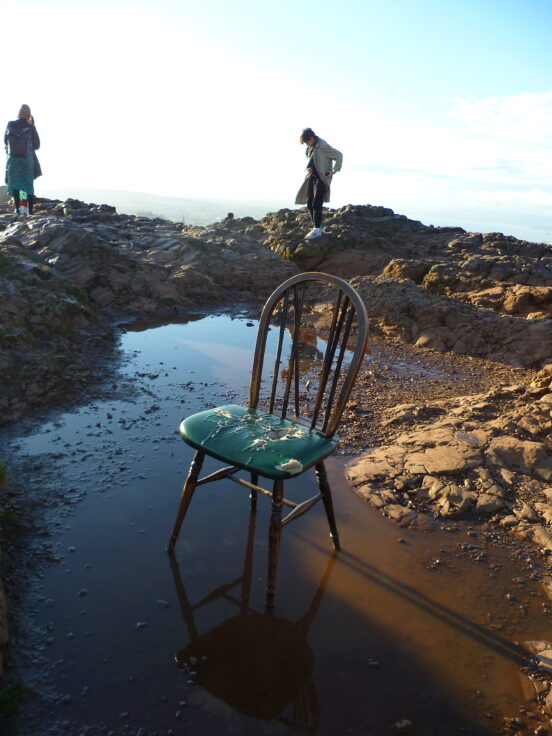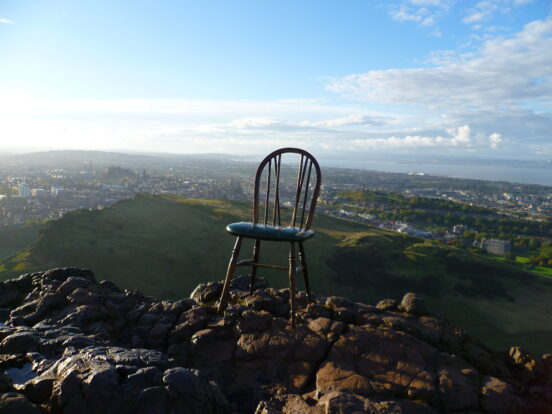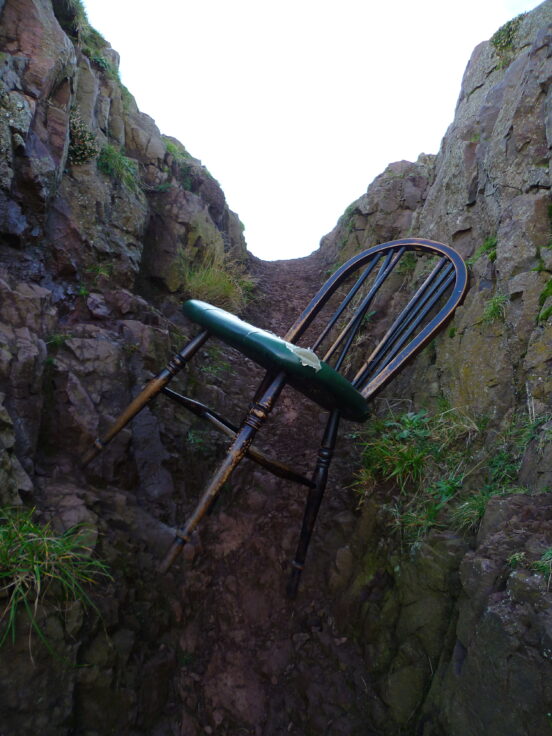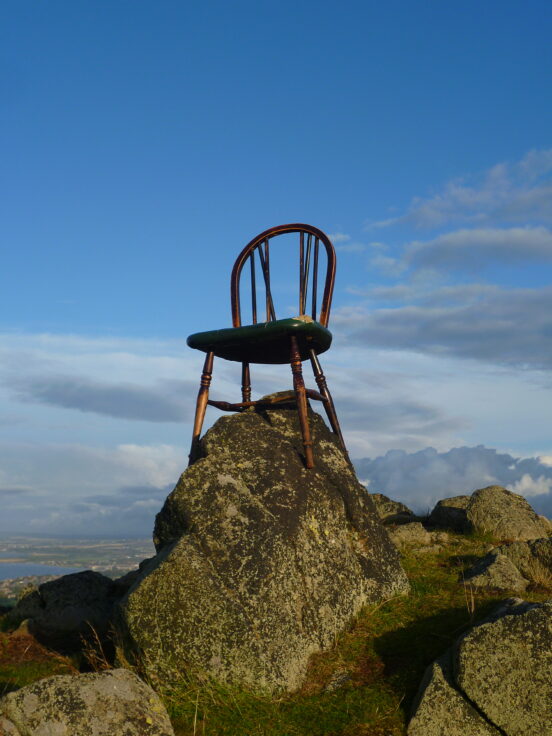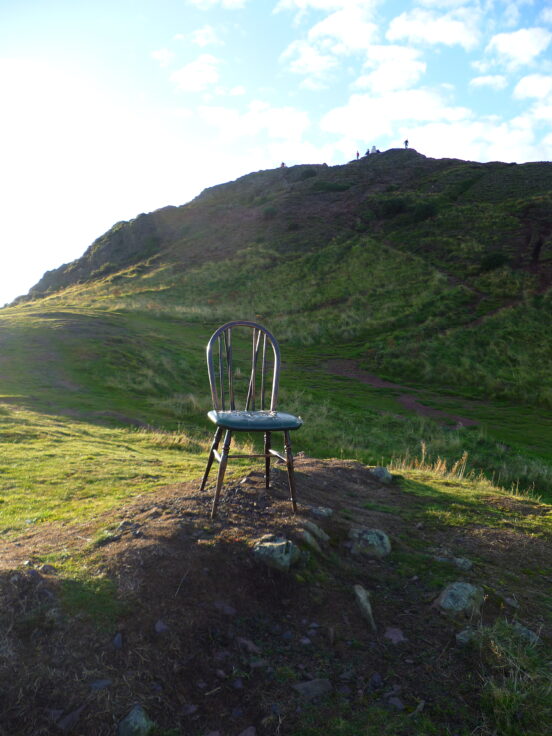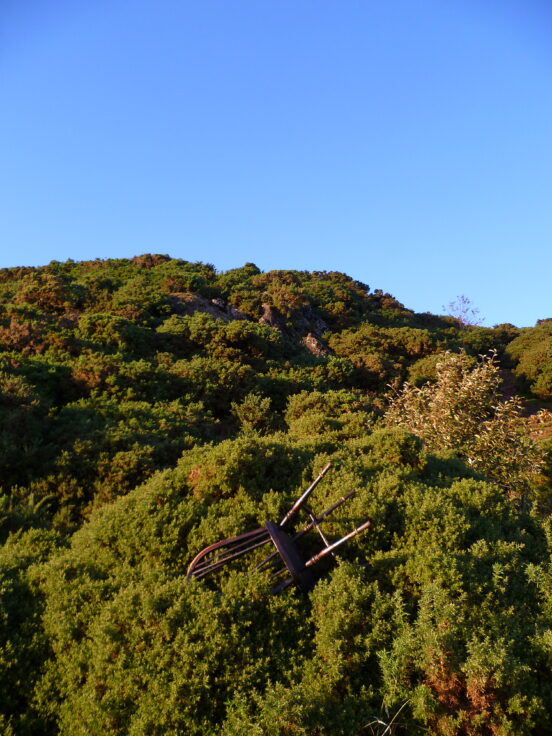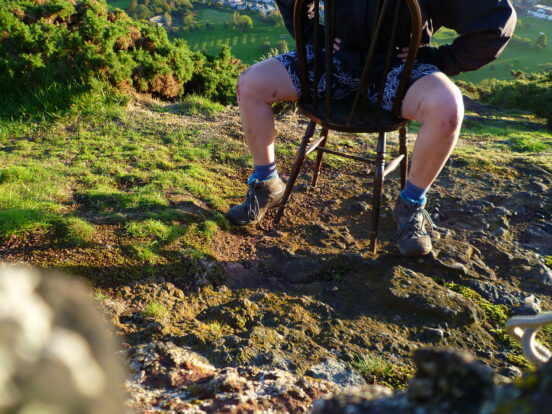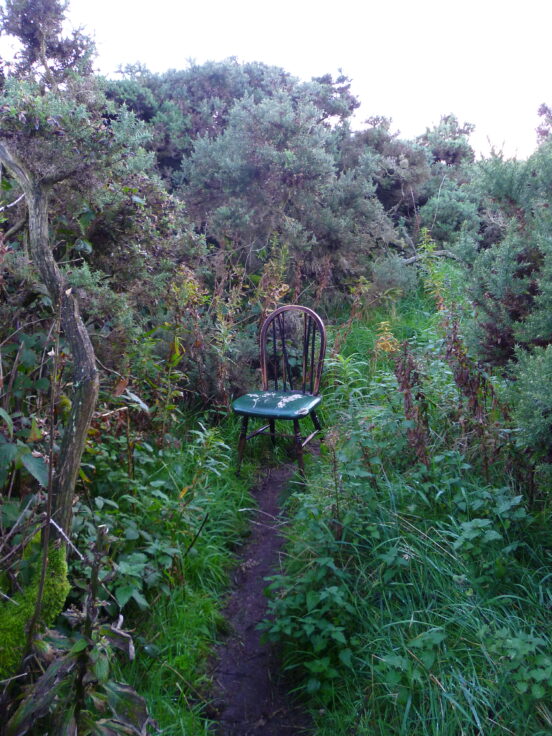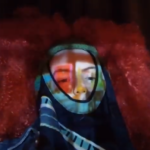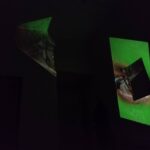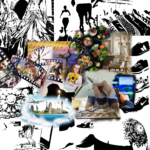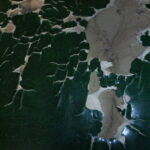On Sunday October 4th I decided to take the chair for a walk up Arthur’s seat, so I could make the pun that it’s Arthur’s Seat’s seat.
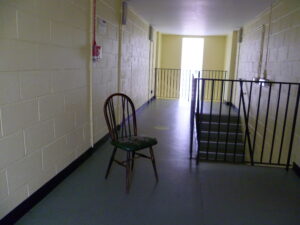
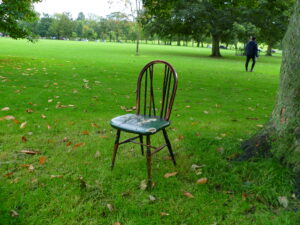
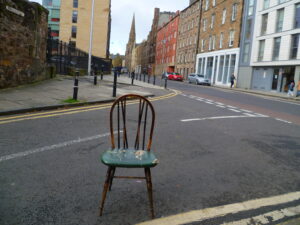
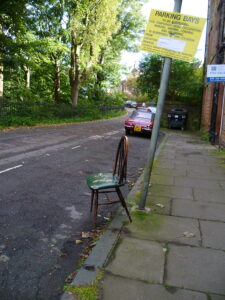
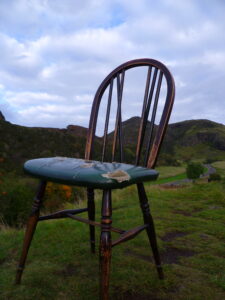
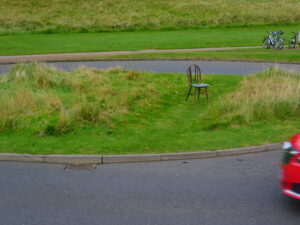

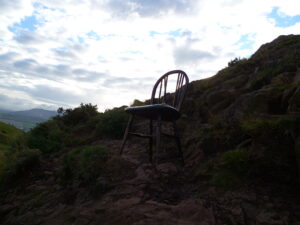
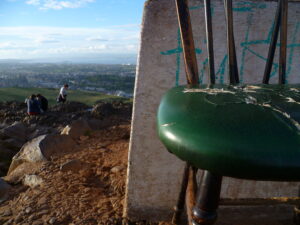
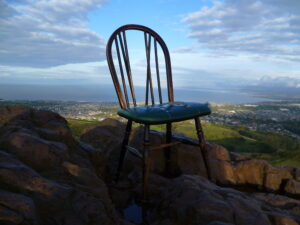
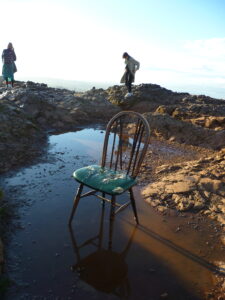
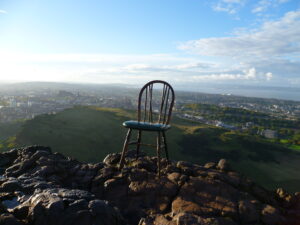
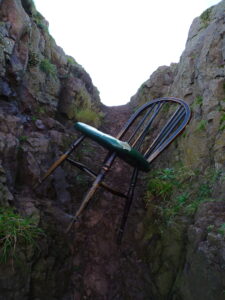



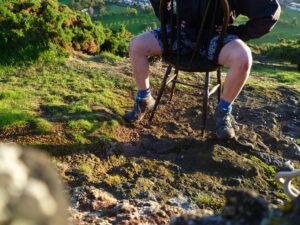
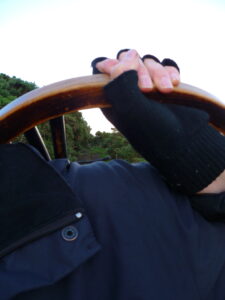

Here are the pictures I took, documenting the journey. It was a much more visceral experience than what they convey, I think. The journey left me with an ache in my back (which I can still feel at the time of writing this) and a cut on my knee, since I found myself grasping onto the rock to help me climb the steeper slopes, carrying the chair all the while. I was sweating, I could hear a creek from the loosening back post as it was pushed into the seat as it rocked against my back, people made comments – “A chair? A chair?”, “Oh, it’s a seat on Arthur’s seat!”
I thought a lot about how this chair fitted in with the environment as I took the photos. The cracks in the cushion were like the craggy rocks, shaped by weather rather than human intervention. I thought about how each part of the chair was once a part of our natural environment that has been processed and refined for human use, the materials of the chair have been alienated from the environment it was once a part of.
I would like to leave this chair somewhere once I am finished with it, I feel by doing this I am continuing its life cycle. Whilst I was living on a Stop HS2 camp during the summer, I met some passionate foragers who talked about giving back to the land we have taken from – for example, when we pick mushrooms/fungus, we should brush the top of them to spread their spores and allow them to spread and grow again. I took this chair out of a skip – you could describe this as ‘urban foraging’ – so in my mind it seems right to leave the chair elsewhere so someone else can enjoy this object.
During a group tutorial in which I displayed these photos, the narrative of these photos was commented on and seemed to give a kind of personhood to the chair, which would be a mystery to whoever finds it once I abandon it. I’m quite interested in the idea of giving a personhood to inanimate things: it’s not unusual for us to form some kind of emotional attachment to some of the objects we own, but this idea of personhood can be found on a much larger, industrial scale. We live in an age in which corporates are trying to develop a personhood for their brand, seen most evidently on sites like twitter, in which their admins have developed a relatable character for the company, which is used to interact with other brands and potential customers like a real human. Fans of such accounts have even gone through the effort of drawing personifications of these brands. We can also see this in a more low-key way, when companies explicitly support/respond to topical campaigns. All of this is an advertising ploy, of course.
In other words, giving an non-human thing personhood is a somewhat easy task. To make this object ‘extraordinary’, as this topic is entitled, then I could perhaps achieve this by developing the personhood of this chair.
